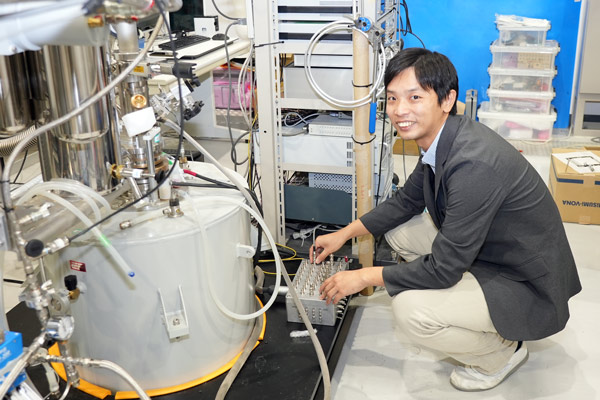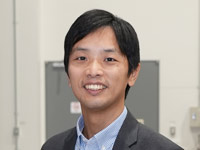Mar. 27, 2024
Creating exotic superconducting phenomena
Sadashige Matsuo, Research Scientist
Please describe your research.
My work is focused on seeking out exotic superconducting phenomena that could be used to control solid-state devices. We do this by designing device 'structures'. For example, when electrons are confined within a tiny device structure, we can precisely control the number of electrons in the structure.
We sometimes also focus on controlling the phenomena at the junction of two different materials. In our recent research, we revealed new superconducting phenomena by tweaking a number of device elements: the structure, the materials, and the electrical controls.
What excites you about your research?
In my view, the most exciting point in my research is always when we manage to engineer superconducting phenomena by creating a new device structure. We do this using CAD (computer-aided design) software for the design and electron beam lithography for the fabrication.
The devices we make help provide information on superconducting phenomena peculiar to its structure, but sometimes the phenomena may also reflect more universal properties in physics. I like to spend time considering unusual device structures and their physical properties. It would be an added pleasure to reveal some important fundamental physics related to these structures.
How and when did you join RIKEN?
I joined in RIKEN as a Special Postdoctoral Researcher in 2019 to continue my experiments on superconductor-semiconductor heterostructures. I made this move partly because my mentor, Seigo Tarucha, an expert in solid-state information processing, moved to RIKEN.

What has been your most memorable experience at RIKEN?
My most memorable experience at RIKEN so far was when I observed what is called a ‘nonlocal Josephson effect’ (Matsuo, S. Commun. Phys. 5, 221; 2022). This could pave the way to engineering short-range coherent coupling between superconducting qubits.
When I initially looked at the first data, I couldn't believe it. So after finishing the measurement, I carefully checked if the device structure was correctly fabricated using a scanning electron microscope.
Then I immediately started the fabrication of new devices with the same structure. After I reproduced the original data with the new devices, I finally recognized the importance of the concept.
A Josephson junction is made by sandwiching a thin layer of a non-superconducting material between two layers of superconducting material, so that pairs of superconducting electrons tunnel right through the non-superconducting barrier from one superconductor to another.
We showed that short-range, coherent coupling can occur between two different Josephson junctions. This coupling could be used to transmit information across short distances.
What are your goals?
One of my goals is to build a new conceptual quantum device to answer questions in fundamental physics, such as those around the existence of Majorana fermions, an elementary particle that is its own antiparticle.Another goal is to help make my field of research more active across Japan.
Rate this article

